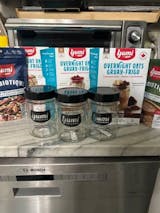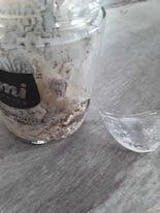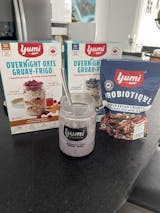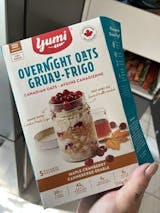Author: Valerie Ivanova, Nutrition Student
As kids, we’re taught that 3 glasses of milk a day help us maintain strong bones and teeth while also making us look like the celebrities in the gotmilk? commercials. But is it true that consumption of dairy foods decreases our risk for diseases such as osteoporosis?
Recent studies show that drinking milk has little to no benefit for our bone integrity - how resilient our bones are - when compared to certain plant-based foods that are high in calcium. A 2014 study showed that teenagers who consumed more milk products were not protected against bone fractures in later life [1]. Instead, each additional glass of milk they had per day increased their risk of hip fractures by 9%.
Another study published in 2014 concluded that higher milk intake for a group of men and women was associated with higher mortality and even a higher likelihood of hip fracture in women [2].
These findings might seem counterintuitive since milk is the most famous source of calcium, and calcium is one of the main builders of bones. But contrary to popular belief, milk is not the only show in town when it comes to calcium. This myth has been perpetuated for decades by lobby groups (for example: The Dairy Farmers of Ontario, who created The Ontario Dairy Education Program). In fact, many plant foods are rich in calcium.
Calcium, Calcium, Calcium!
The recommended dietary allowance for calcium is around 1000 mg a day for healthy adults. A serving of a calcium-rich food could be a glass of milk, and it can also be a cup of calcium-set tofu or a cup of cooked kale. Other plant foods high in calcium are soybeans, bok choy, collard greens, fresh and dried figs and sesame products such as tahini. Calcium is also added to fortified cereals and plant milks, like almond or cashew milk.
The calcium requirement is greater for adolescents and for adults over 50 since we form most of our bone mass during adolescence, and as we get older, bone loss outweighs bone formation. It might come as a surprise that our bones are a living tissue, since we tend to think of them as solid and static, but nothing in our bodies is really static. Throughout our lives, parts of bones are always breaking down and reforming and these processes are affected by the foods we eat, as well as factors like exercise and age.

Bone Building
Calcium is not the only builder of strong bones, and focusing on it alone is not enough to lower your risk of osteoporosis. When it comes to calcium absorption, Vitamin D is your body’s biggest helper. It is also needed for making the hormone calcitriol, which regulates the levels of calcium and phosphorus in the body and consequently, how much calcium is either kept in or removed from our bones. Without Vitamin D, an insufficient amount of calcium is absorbed from our diet.
Vitamin D is known as the sunshine vitamin because it is produced when sunlight hits our skin! Sadly for us Canadians and other people living in northern latitudes, sunlight can be hard to come by in the dreary winter months. That’s why Health Canada recommends taking supplements from October to April to meet your daily requirement. Nowadays, many products are also fortified with Vitamin D, such as cereals, orange juice, and soy milk.
How Else Can I Increase My Bone Density?
Besides nutrition, the best way to increase bone density is by physical activity. During exercise, the act of our muscles pulling on our bones increases bone and strength over time. The best exercise for bones is any weight-bearing exercise. It forces your body to build up strength as it works against gravity. Aim to do bone and muscle strengthening exercises at least twice per week. Along with a balanced diet rich in calcium and Vitamin D, it will help you maintain strong bones.
Why Plant-Based?
Compared to dairy, plant-based sources of calcium come with some added benefits. Vegetables, fruits and soybeans contain a lot of fibre and we know that soluble fibre lowers cholesterol in the blood and insoluble fibre improves bowel health. Including a greater selection of the aforementioned plant-based sources of calcium, such as kale and tahini, can decrease your risk for cardiovascular diseases, while keeping you regular. And who doesn’t want that?
References
- Feskanich, Diane et al. “Milk Consumption During Teenage Years and Risk of Hip Fractures in Older Adults.” JAMA pediatrics 168.1 (2014): 54–60. PMC. Web. 22 Jan. 2018. http://www.csep.ca/CMFiles/Guidelines/CSEP_PAGuidelines_adults_en.pdf
- Michaëlsson, K., Wolk, A., Langenskiöld, S., Basu, S., Lemming, E. W., Melhus, H., & Byberg, L. (2014). Milk intake and risk of mortality and fractures in women and men: Cohort studies. BMJ (Online), 34910.1136/bmj.g6015












